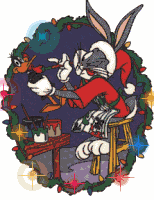Merry Christmas Some History
Saint Nicholas
Saint Nicholas of Myra[a] (traditionally 15 March 270 – 6 December 343),[3][4][b] also known as Nicholas of Bari, was an early Christian bishop of Greek descent from the maritime city of Patara in Anatolia (in modern-day Antalya Province, Turkey) during the time of the Roman Empire.[7][8] Because of the many miracles attributed to his intercession, he is also known as Nicholas the Wonderworker.[c] Saint Nicholas is the patron saint of sailors, merchants, archers, repentant thieves, children, brewers, pawnbrokers, toymakers, unmarried people, and students in various cities and countries around Europe. His reputation evolved among the pious, as was common for early Christian saints, and his legendary habit of secret gift-giving gave rise to the folklore of Santa Claus ("Saint Nick") through Sinterklaas.
https://en.wikipedia.org/wiki/Saint_Nicholas
Amalia Elisabeth Eriksson, née Lundström (25 November 1824 – 19 January 1923),
was a Swedish businesswoman, known as the inventor of the Polkagris, a type of candy stick known to have inspired the candy cane, which she invented in Gränna, Sweden.
Amalia Eriksson was born in Jönköping, the daughter of farrier Jonas Lundström and maid Katarina Hagen Andersdotter in the year of 1824. When she was 10, she lost her parents and all her siblings to infectious diseases, including the cholera epidemic.
Amalia started working as a maidservant, following her mother’s footsteps. In 1855, she moved to Brahegatan 2, Gränna in the company of the Röding sisters, the family she was working for, which later became a hotel named after Amalia.
https://en.wikipedia.org/wiki/Amalia_Eriksson
A festive sweet treat with surprising Swedish origins
Every year, millions of red and white polkagris sweets, also known as candy canes or sticks, are rolled out by hand in the tiny town of Gränna in the north of Småland, considered by many to be Sweden's capital of candy.
Shop windows along Brahegatan (the main street) abound with colourful displays, ready for the multitude of tourists who flock in to taste the iconic treats. During the holidays, the town hosts a Christmas market and concert and visitors can see candy makers handcrafting the red-and-white sticks in shop windows.
https://www.bbc.com/travel/article/20241219-a-festive-sweet-treat-with-surprising-swedish-origins
Mistletoe: The Evolution of a Christmas Tradition
Why does this parasitic plant remind us of romance?
https://www.smithsonianmag.com/science-nature/mistletoe-the-evolution-of-a-christmas-tradition-10814188/
Difference between Julian Calendar and Gregorian Calendar
The Julian and Gregorian calendars are two timekeeping systems that have played pivotal roles in the organization of days, months, and years in many cultures around the world.
Their differences highlight not only changes in scientific understanding but also the evolution of cultural and political priorities over time.
In the article below, World History Edu delves into their origins, mechanics, motivations for change, and enduring impacts.
https://worldhistoryedu.com/difference-between-julian-calendar-and-gregorian-calendar/
























